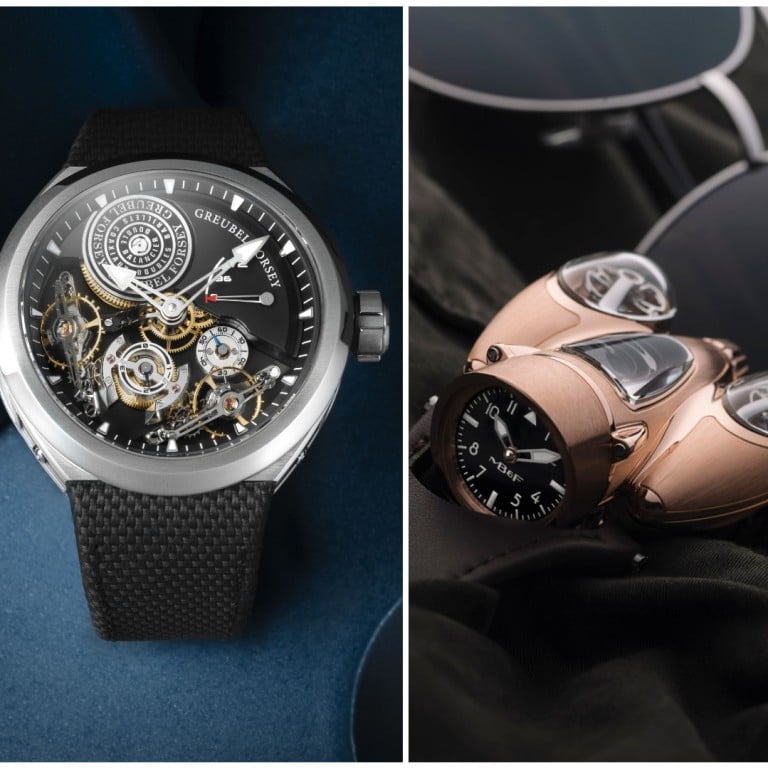6 timepieces with twin balance wheels for 2024: from MB&F’s futuristic HM9 Flow to Armin Strom’s shot at perpetual motion, these watches blend enhanced mechanical precision with spectacular visual appeal

- Sci-fi meets haute horology on MB&F’s HM9 Flow – the design, with twin balance wheels at the back of a sapphire crystal case, recalls an aerodynamic jet engine
- Philippe Dufour was the first watchmaker to miniaturise the double-balanced pocket watch movement, and its pioneering Duality is so rare that one of them was auctioned for US$3.66 million
Sometimes more is more. Using two rather than one balance wheel improves precision. While having unique technical solutions, the twin escapements are connected. Thus the error in rate that all mechanical watches have is mechanically or physically averaged out – and hey presto, your watch is more precise while having a distinct and spectacular feature.
1. Czapek Place Vendôme Complicité

Czapek’s Place Vendôme Complicité is a collaboration by two fathers who got to know each other in a schoolyard in Neuchâtel where their children attended the same school: Xavier de Roquemaurel, CEO of Czapek & Cie., and Grand Prix-winning watchmaker Bernhard Lederer. And just as the two men formed a friendship, the two balance wheels and escapements work in tandem, evening out each other’s rate variation via a differential seen at 12 o’clock.
2. MB&F HM 9 Flow

The sci-fi-themed MB&F Horological Machines often have double features displayed in sapphire domes jutting up from their playful designs. For the HM9 Flow, the twin balance wheels are placed at the back of a complex sapphire crystal case reminiscent of an aerodynamic jet engine. As always with MB&F, the handmade finishes and horological performance are of top-notch quality, with a central “gearbox” featuring a planetary differential that averages the output of both balances.
3. F.P. Journe Chronomètre á Résonance

François-Paul Journe added his salt to dual-balance horology with the Chronomètre á Résonance. For its 20th anniversary (in 2020), he presented a new version of the movement based on the natural phenomenon of resonance discovered in the 17th century: two bodies vibrating at a similar frequency automatically strive towards a common frequency. For added chronometric performance, F.P. Journe added a remontoir d’égalité, which ensures the energy released from the mainspring remains the same throughout its cycle.